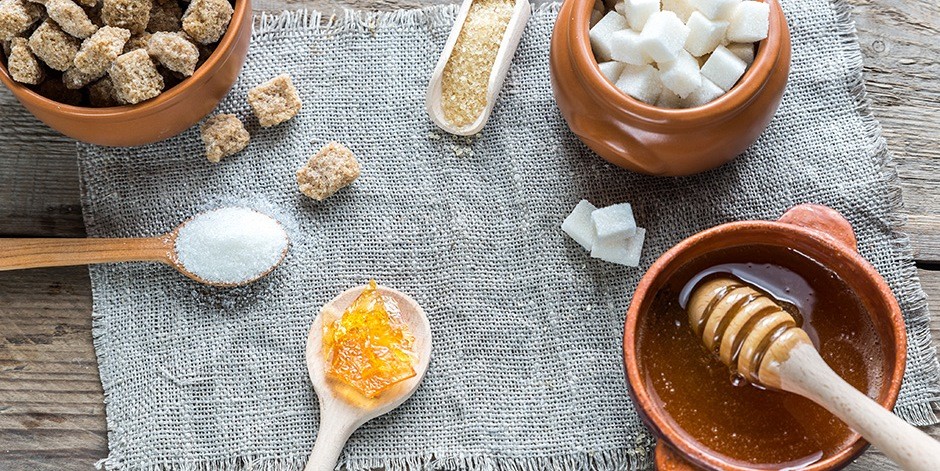Post-holidays, we often swear off sweets figuring we ate enough to last a lifetime. But before long, our sweet tooth sneaks up and we struggle to resist. We’re right to try, however. Studies consistently link excessive added-sugar consumption (anything above 5–10 percent of your daily caloric intake or roughly 6–12 teaspoons, according to many scientists) to major diseases such as diabetes, heart disease and perhaps even cancer, as well as minor ailments like colds (sugar can dampen the immune system).
This year, when you start hankering for sweets again, replace refined, nutrition-less white sugar with these alternatives. They contain more nutrients and are slower to spike blood-sugar levels. But beware: Your body still processes them as a sugar, which means that moderation is an absolute must.
Coconut Palm Sugar
Made by evaporating the sap of a coconut palm, this sweetener provides nutrients such as potassium, amino acids and some B vitamins. It also contains a fiber called inulin, which supports growth of good bacteria in your gut for healthy digestion. You can substitute it 1 to 1 for white sugar in recipes, making it good for baking—although the result is a little less sweet.
Tip: Check labels before you buy; some manufacturers mix in cane sugar and other sweeteners.
Unsulfured Molasses
Molasses, a byproduct of table-sugar production, is essentially where all the nutrients of sugar cane end up—nutrients such as iron (more than 20 percent of the RDA per serving), potassium (as much as half a large banana per serving), magnesium and calcium. In general, the darker the color, the more intense both the flavor and the nutrient density; blackstrap molasses is the most nutritious. Use molasses to add a rich taste to yams, baked beans, yogurt, smoothies and oatmeal, or as a brown-sugar substitute in some baked goods.
Tip: Avoid sulfured molasses, which has been treated with sulfur dioxide as a preservative.
Raw Honey
Honey is considered raw when it has not been heated enough to be pasteurized (beyond 95 degrees). Processing may strip a lot of honey’s nutritional value, but raw honey retains its natural nutrients, including B vitamins, amino acids and antioxidants. If you use it for baking, you can usually get away with using less honey than you would sugar; you may have to play with recipes to determine the ideal amount.
Tip: Raw honey crystallizes much sooner than processed honey, so it may be more of a solid than a liquid.
- ¾ cup avocado flesh, very ripe, but not brown
- ½ cup coconut sugar or ½ cup honey
- 1 egg
- ½ cup dark cocoa powder
- ½ teaspoon baking soda
- 50 grams semi-sweet or dark chocolate chunks
- Preheat oven to 350°. Using a hand mixer or food processor, mix together avocado and coconut sugar until smooth. Then mix in the egg.
- Mix in cocoa powder and baking soda. Stir in chocolate chunks.
- Line a baking sheet with parchment paper. Use two spoons to place dollops of cookie dough on top of the paper. Flatten cookies out a bit with the back of the spoon.
- Bake for 8–10 minutes, until the cookies don’t stick as much to the paper as they did before baking.
- Cool before serving, and store in airtight container in the fridge.

